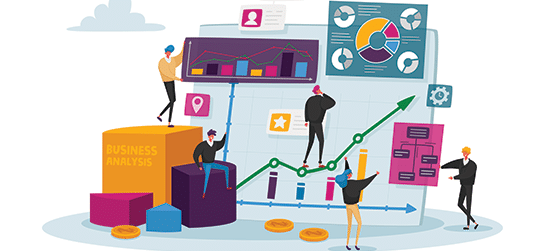In virtually every organization, multiple technology solutions are adopted for a wide range of reasons such as improving productivity, simplifying tasks, streamlining processes, and more. While these solutions generally deliver an overall net positive benefit, they can also produce significant distractions that affect the entirety of an organization and leave the full potential of the solutions unrealized. This result of solutions, or parts of solutions, being complicated and disconnected or requiring more effort to use than what should be necessary, has come to be known as digital friction.
What is digital friction?
Gartner defines digital friction as the “unnecessary effort an employee has to exert to use data or technology to work.” The rise in digital friction corresponds in large part to the rise in digital transformation and more end-user employees playing a central role in technology implementations and customizations.
What are the top sources of digital friction?
Naturally, the sources of digital friction from solution to solution and organization to organization vary widely. Oftentimes digital friction occurs when enterprise organizations adopt off-the-shelf solutions to streamline common activities and facilitate information sharing. These technologies can include everything from email platforms and conversation solutions to meeting and documentation sharing software. While these generalized solutions may make a significant percentage of work more efficient, they are also known to leave big gaps and create ancillary issues. These gaps have the potential to be addressed with custom built solutions or applications, but the need is not usually deemed critical enough for the investment to be made. This results in highly manual and time-consuming workarounds for the activities that lack a solution or support. This also results in critical data being housed in different and disconnected solutions, which makes it a challenge to understand big picture insights, evaluate current status and make strategic decisions. Not only is this inefficient, but this fragmented approach makes it difficult for an organization to report on and manage work.
In comprehensively examining the issue and surveying almost 5,000 employees from various functions and industries, Gartner has found that the top five sources of digital friction are:
- Low data quality
- Poor user experience
- Complex and inconsistent workflows
- Mundane and repetitive tasks
- Leadership understanding of technology’s impact
How does digital friction impact organizations?
Perhaps the largest impact of digital friction is the loss in productivity among employees using the organization’s technology as well as those who are connected to these employees via process or relative proximity. According to Gartner’s 2020 Gartner Digital Friction Survey, “Two out of three employees exert too much effort when using workplace technologies” and “waste 5+ hours every week when working with technology.” This wasted time and unnecessary frustration from inefficient processes not only impacts productivity, but can also negatively impact employee engagement and cause employee turnover.
As noted above, digital friction also robs organizations of the full potential of the technology solutions they implement. The greater the presence of digital friction, the less return an organization sees from its technology investments.
How can organizations overcome digital friction?
Forward thinking enterprises are overcoming digital friction by implementing Collaborative Work Management (CWM) solutions that serve as highly effective orchestrators of work where business users and entire project teams can manage data, plan, automate, report, communicate, and, most importantly, do it continuously. Acting as a complete stack of technology that fills even the tiniest gaps, CWM solutions enable an organization to always stay within one system, no matter the task. The result? Highly structured, connected and constantly updated data that provides context across the entire project lifecycle and a consistent business user experience. Three primary benefits that CWM solutions deliver are:
- Connecting the organization through work management – Connection improves planning and increases collaboration at every phase of business, from order to delivery. Connection also means seamlessly integrating the wider array of systems and data that people rely on as well as ensuring transparency and visibility across project lifecycles and content via comprehensive dashboards, reports, and portals. By creating a centralized collaboration hub for all work, organizations can ensure a common view, context and structure across teams.
- Streamlining inefficient workflows – CWM solutions improve workflows and accelerate timelines by leveraging automation and AI to define repeatable business processes, standardize activities, construct easy-to-use-and-adopt work templates and cut down on manual tasks.
- Enabling customization through composability – Composability enables solutions to be tailored to the unique needs of the organization without heavy development burdens or IT involvement to expand features and functionality. With composable solutions organizations gain unmatched business agility, scale with ease and can quickly adapt and adjust to change. Intuitive and easy to configure, composable CWM solutions truly empower business users by making it easy for those users that have been given permissions to add to the data model, change workflows, define reports and outline metrics to track, all using a no code platform
Don’t Let Digital Friction Hold Your Business Back
Technology will undoubtedly continue to be a pivotal driver of how work gets done in hybrid, remote, and other work models that continue to rapidly evolve. To get the most out of their technology investments and empower employees with the solutions and information they need to get their jobs done efficiently and effectively, organizations need to actively assess the impact of digital friction across their environment and look to solutions like CWM to reduce it. Those that do so will put themselves in a significantly stronger position to navigate the challenges and opportunities they face.
Learn more about the emerging market of collaborative work management and CWM solutions that can be implemented to reduce digital friction. Read the most recent Gartner Market Guide for Collaborative Work Management.
– Gartner, Market Guide for Collaborative Work Management, By Nikos Drakos, Mike Gotta, 27 October 2021
Gartner does not endorse any vendor, product or service depicted in its research publications, and does not advise technology users to select only those vendors with the highest ratings or other designation. Gartner research publications consist of the opinions of Gartner research organization and should not be construed as statements of fact. Gartner disclaims all warranties, express or implied, with respect to this research, including any warranties of merchantability or fitness for a particular purpose.
GARTNER is a registered trademark and service mark of Gartner, Inc. and/or its affiliates in the U.S. and internationally and is used herein with permission. All rights reserved.






